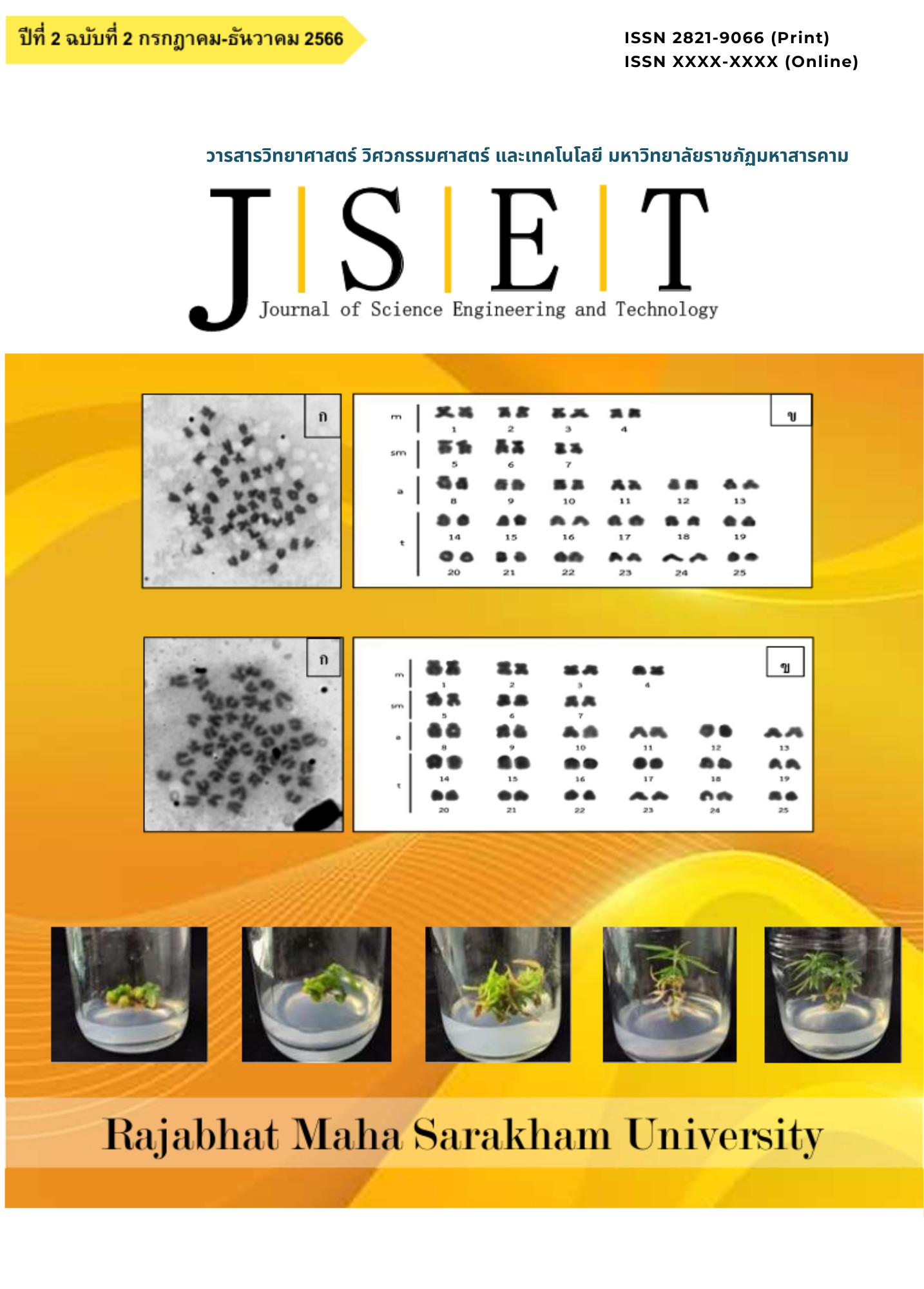ผลการฝึกด้วยยางยืดที่มีต่อสมรรถภาพทางกายในนักกีฬาวอลเลย์บอลระดับเยาวชน
Main Article Content
บทคัดย่อ
วัตถุประสงค์: เพื่อศึกษาผลการฝึกด้วยยางยืดที่มีต่อสมรรถภาพทางกายในนักกีฬาวอลเลย์บอล
ระดับเยาวชน
วิธีดำเนินการวิจัย: กลุ่มตัวอย่างเป็นเป็นนักกีฬาวอลเลย์บอลหญิง โรงเรียนเลยพิทยาคม อายุระหว่าง 14 - 15 ปี จำนวน 12 คน โดยใช้การสุ่มตัวอย่างแบบง่าย ทำการฝึกด้วยแรงต้านจากยางยืด 10 ท่า สัปดาห์ละ 3 วัน ฝึกทั้งหมด 6 สัปดาห์ จากนั้นเปรียบเทียบโดยใช้สถิติ T-test ของค่าเฉลี่ยของสัดส่วนมวลกาย ความแข็งแรงของกล้ามเนื้อ และความคล่องแคล่วว่องไวก่อนและหลังการทดลอง
ผลการวิจัย: ความแข็งแรงของกล้ามเนื้อขาและกล้ามเนื้อแขน ก่อนและหลังการทดสอบพบว่า ทั้งความแข็งแรงของขา และความแข็งแรงของกล้ามเนื้อแขนแตกต่างกันอย่างมีนัยสำคัญทางสถิติที่ระดับ .05
สรุปผล: การฝึกด้วยยางยืดสามารถเป็นเครื่องมือที่มีประสิทธิภาพในการฝึกเพื่อเพิ่มสมรรถภาพด้านความแข็งแรงของกล้ามเนื้อ และสามารถพัฒนาประสิทธิภาพของนักกีฬาวอลเลย์บอลในสนามและลดความเสี่ยงต่อการบาดเจ็บ
Article Details

อนุญาตภายใต้เงื่อนไข Creative Commons Attribution-NonCommercial-NoDerivatives 4.0 International License.
เอกสารอ้างอิง
Baechle, T. R., Earle, R. W., & Wathen, D. (2008). Resistance training. In Essentials of Strength Training and Conditioning (3rd ed.). Champaign, IL: Human Kinetics.
Ballmann, C. G., McCullum, M. J., Rogers, R. R., Marshall, M. R., & Williams, T. D., (2021). Effects of Preferred vs. Nonpreferred Music on Resistance Exercise Performance. Journal of Strength and Conditioning Research, 35(6), 1650-1655. Doi: 10.1519/JSC.0000000000002981.
Botton, C. E., Radaelli, R., Wilhelm, E. N., Rech, A., Brown, L. E., & Pinto, R. S. (2017). Neuromuscular adaptations to elastic resistance training in older women. Journal of Aging and Physical Activity, 25(4), 625-632.
Campos, G. E. R., Luecke, T. J., Wendeln, H. K., Toma, K., Hagerman, F. C., Murray, T. F., Ragg, K. E., Ratamess, N. A., Kraemer, W. J., & Staron, R. S. (2002). Muscular adaptations in response to three different resistance-training regimens: specificity of repetition maximum training zones. European Journal of Applied Physiology, 88(1-2), 50-60.
doi: 10.1007/s00421-002-0681-6
Gondin, J., Guette, M., Ballay, Y., & Martin, A. (2011). Electromyostimulation training effects on neural drive and muscle architecture. Medicine and Science in Sports and Exercise, 43(4), 602-610. doi: 10.1249/MSS.0b013e3181f39eda.
Heredia-Jimenez, J., Hernandez-Murua, J. A., Garcia-Zapirain, B., & Mendez-Zorrilla, A. (2019). Effectiveness of elastic resistance bands in rehabilitation: A systematic review and meta-analysis of randomized controlled trials. European Journal of Physical and Rehabilitation Medicine, 55(3), 326-336.
Levinger, I., Bronks, R., Cody, D. V., Linton, I., & Davie, A. (2007). Resistance training for peripheral artery disease: implications for functional capacity and quality of life. Journal of Aging and Physical Activity, 15(3), 283-293. doi:10.1123/japa.15.3.283
Levinger, P., Menz, H. B., Wee, E., & Feller, J. A. (2007). Training with elasticresistance bands improves balance and functional abilities in older adults. Journal of Aging and Physical Activity, 15(3), 230-238.
Linnamo, V., Pakarinen, A., Komi, P. V., & Kraemer, W. J. (2000). Effects of explosive type strength training on physical performance characteristics in cross-country skiers. European Journal of Applied Physiology, 82(4), 251-259.
Martel, G. F., Harmer, M. L., Logan, J. M., Parker, C. B., & Aquino, R. L. (2013). Resistance training with elastic bands: A comparison of muscular adaptations using constant and variable resistance. Journal of Strength and Conditioning Research, 27(2), 335-341.
Nascimento, M. A., Ribeiro, A. S., Schoenfeld, B. J., Nunes, J. P., Aguiar, A. F., & Cyrino, E. S. (2020). Elastic resistance training improves muscle strength and body composition in obese women. Journal of Strength and Conditioning Research, 34(6), 1656-1664.
Oliveira, P. A., Blasczyk, J. C., Souza, G. J., Lagoa, K. F., Soares, M., Oliveira, R. J., Filho, P. J. B. G., Carregaro, R. L., & Martins, W. R. (2017). Effects of elastic resistance excercise on muscle strength and functional performance in healthy adults: a systematic review and meta-analysis. Journal of Physical Activity and Health, 14(4), 317-327.
https://doi.org/10.1123/ jpah.2016-0415
Pinto, R. S., Gomes, N., Radaelli, R., Botton, C. E., Brown, L. E., & Bottaro, M. (2012). Effect of range of motion on muscle strength and thickness. Journal of Strength and Conditioning Research, 26(8), 2140-2145.
doi: 10.1519/JSC.0b013e31823a3b16
Saeterbakken, A. H., Andersen, V., Brudeseth, A., & Lund, H. (2013). Resistance training with elastic bands: Benefits for older adults. Journal of Aging and Physical Activity, 21(1), 41-53.
Wilk, B., Gepner, Y., Shefi, S., & Zelzer, E. (2019). A Novel Method for Quantitative Assessment of Training Adherence and Exercise Performance: Preliminary Results in Patients with Heart Failure. Journal of Clinical Medicine, 8(6), 867. doi:10.3390/jcm8060867


